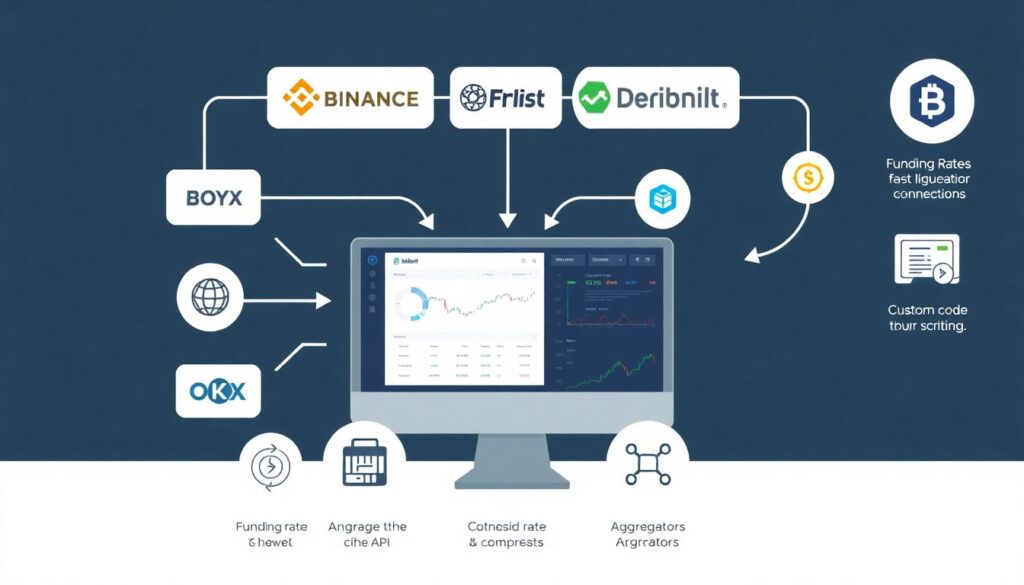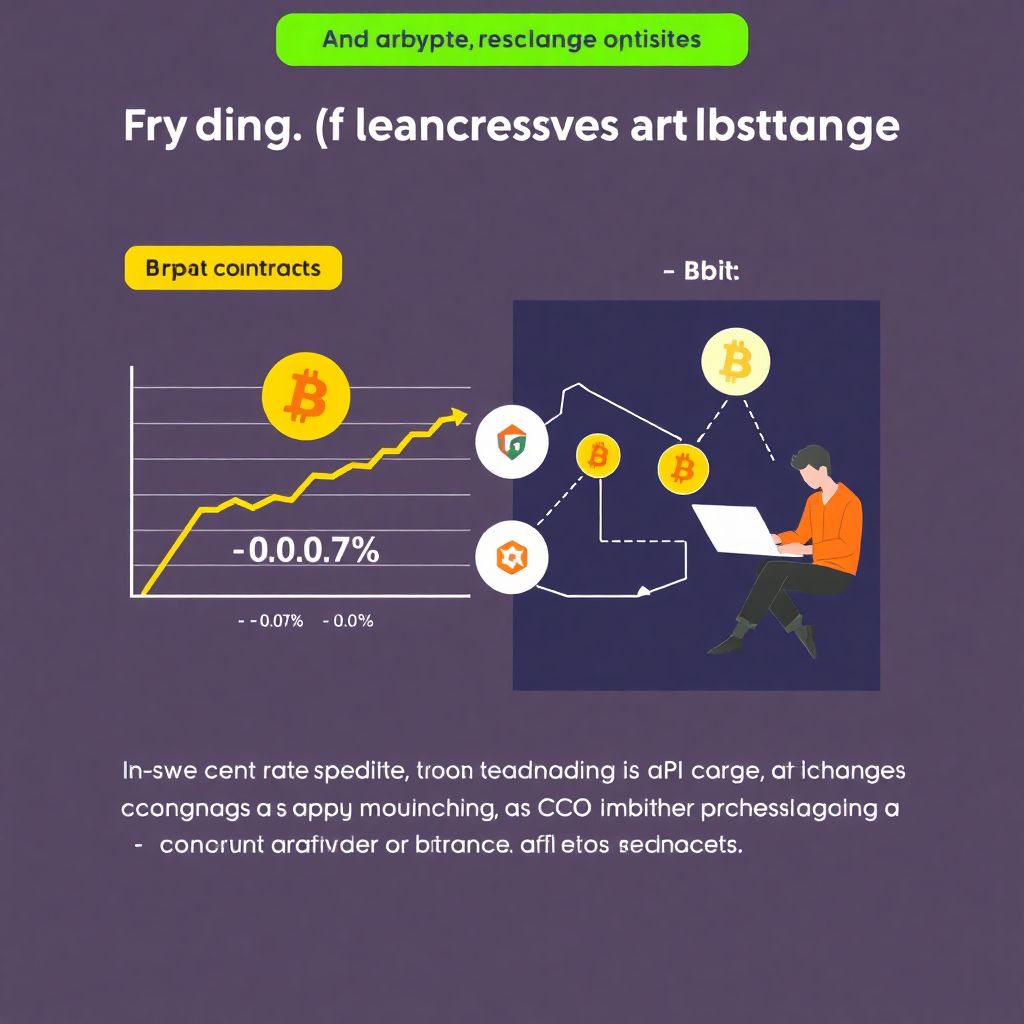Understanding Funding Rates: The Basics

Before diving into arbitrage strategies, it’s crucial to grasp what funding rates are. In perpetual futures contracts—common in crypto derivatives—funding rates are periodic payments exchanged between long and short traders. These payments ensure that the contract price stays close to the spot price. If the funding rate is positive, longs pay shorts; if negative, shorts pay longs. For example, if BTC perpetual contracts are trading above the spot price, the funding rate becomes positive to discourage long positions and incentivize shorts.
Funding rates can vary across exchanges and assets. According to data from Coinglass in early 2024, funding rates for BTC perpetuals ranged from -0.01% to +0.08% across major platforms like Binance, Bybit, and OKX. These differences open up opportunities for arbitrage, especially when combined with cross-exchange strategies.
What Is Cross-Exchange Arbitrage?

Cross-exchange arbitrage involves exploiting price or funding rate discrepancies between two or more trading platforms. The idea is simple: you go long on one exchange and short on another, locking in the funding rate differential or price spread. This method doesn’t rely on price movement but on inefficiencies in the market.
Let’s say BTC/USDT is trading at $30,000 on Exchange A and $30,100 on Exchange B. If you short on B and go long on A, you can pocket the $100 spread—assuming execution is fast and fees are low. More commonly, traders focus on funding rate arbitrage: for instance, if Binance has a +0.07% funding rate and Bybit has -0.01%, you long on Bybit and short on Binance, earning the funding differential every 8 hours.
Economic Rationale Behind the Strategy
At its core, arbitrage is about market efficiency. When funding rates diverge, they reflect imbalances in trader sentiment or liquidity. By engaging in cross-exchange arbitrage, traders help stabilize the market. Economically, this strategy:
1. Reduces volatility between exchanges
2. Encourages liquidity flow to underpriced platforms
3. Aligns perpetual contract prices with spot markets
However, arbitrage isn’t risk-free. Capital must be split across platforms, and traders face exchange-specific risks like downtime, slippage, or withdrawal delays. Moreover, fees can eat into profits if not carefully managed. That’s why many arbitrageurs use automated bots and API integrations to execute trades in milliseconds.
Statistical Insights and Market Behavior
In a 2023 study by Kaiko Research, average funding rate discrepancies between top exchanges exceeded 0.05% during volatile periods. These windows, although brief, were frequent—occurring 20+ times per month. Notably, altcoins like SOL and AVAX offered even larger spreads, sometimes exceeding 0.1% due to lower liquidity.
Moreover, arbitrage opportunities tend to spike during market stress. For example, during the FTX collapse in November 2022, funding rate gaps between Binance and Kraken reached record highs, offering savvy traders significant returns. However, these periods also carry heightened counterparty risk.
How to Execute a Practical Arbitrage Strategy

Here’s a simplified roadmap to get started with funding rate and cross-exchange arbitrage:
1. Identify Exchanges: Choose platforms with high liquidity and fast API access—Binance, OKX, Bybit, and Deribit are common choices.
2. Monitor Funding Rates: Use aggregators like Coinglass or create a custom script to track real-time funding rates.
3. Deploy Capital: Split your funds across two or more exchanges. Ensure you have enough margin to open equal-sized long and short positions.
4. Automate Execution: Use trading bots with built-in arbitrage logic. Manual execution is too slow for consistent profits.
5. Manage Risks: Watch for sudden funding rate reversals, exchange outages, or liquidation risks. Set tight stop-losses and monitor positions continuously.
Forecasting the Future of Arbitrage Opportunities
As the crypto market matures, some expect arbitrage opportunities to shrink. Improved exchange APIs, faster arbitrage bots, and increased competition mean fewer inefficiencies. However, with the rise of new derivatives platforms and layer-2 networks, fresh opportunities continue to emerge.
By 2026, analysts expect decentralized perpetual platforms like dYdX or GMX to offer funding rate arbitrage similar to centralized exchanges. This could open the door to DeFi-based arbitrage strategies, where funding rates are dictated by AMM pools rather than traditional order books.
Moreover, AI-based arbitrage bots are gaining traction. These systems use machine learning to predict funding rate changes and execute trades preemptively, further tightening spreads but also creating new niches for advanced strategies.
Impact on the Crypto Trading Industry
Cross-exchange arbitrage has reshaped how institutional and retail traders approach crypto markets. It’s no longer about “buy low, sell high” but about exploiting inefficiencies in funding mechanics. This has led to:
1. More sophisticated trading infrastructure: Firms now invest in colocation servers and high-frequency bots.
2. Increased market efficiency: Arbitrage narrows spreads and aligns prices across platforms.
3. New revenue models: Some funds specialize solely in arbitrage, offering investors low-risk, consistent returns.
On the flip side, exchanges have started adjusting their funding rate formulas to reduce arbitrage abuse. Some now cap funding rates or introduce time-weighted averages to prevent manipulation. This forces traders to adapt constantly.
Final Thoughts
Funding rate and cross-exchange arbitrage isn’t a get-rich-quick scheme, but with the right tools and discipline, it offers a steady edge in an otherwise volatile market. As the industry evolves, so too will the tactics. Staying ahead means combining real-time data, automation, and a deep understanding of market microstructure. Whether you’re a solo trader or part of a quant team, mastering funding rate arbitrage could be your ticket to consistent yield in crypto.

